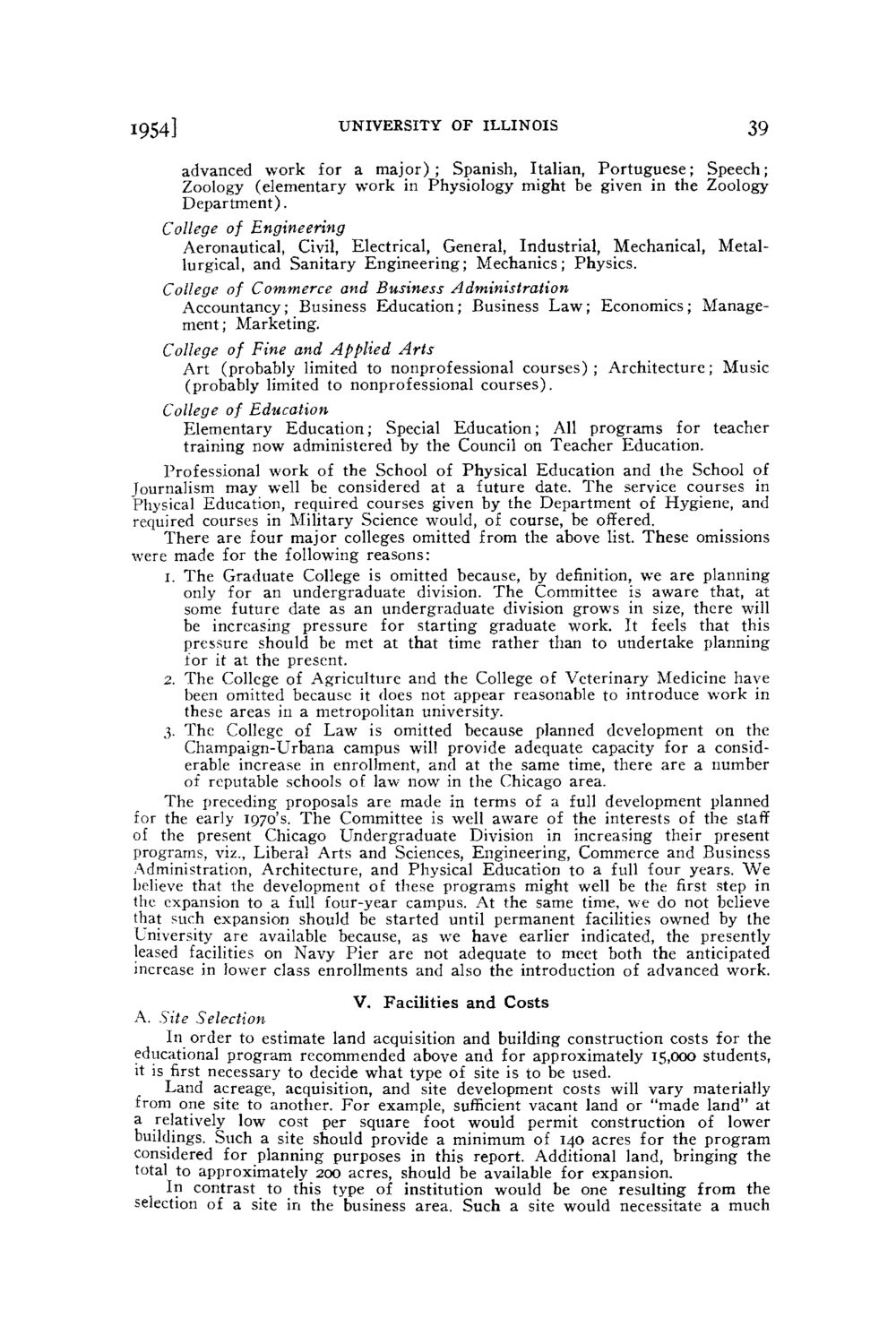| |
| |
Caption: Board of Trustees Minutes - 1956
This is a reduced-resolution page image for fast online browsing.

EXTRACTED TEXT FROM PAGE:
1954] UNIVERSITY OF ILLINOIS 39 advanced work for a major) ; Spanish, Italian, Portuguese; Speech; Zoology (elementary work in Physiology might be given in the Zoology Department). College of Engineering Aeronautical, Civil, Electrical, General, Industrial, Mechanical, Metallurgical, and Sanitary Engineering; Mechanics; Physics. College of Commerce and Business Administration Accountancy; Business Education; Business L a w ; Economics ; Management; Marketing. College of Fine and Applied Arts Art (probably limited to nonprofessional c o u r s e s ) ; Architecture; Music (probably limited to nonprofessional courses). College of Education Elementary Education; Special Education; All programs for teacher training now administered by the Council on Teacher Education. Professional work of the School of Physical Education and the School of Journalism may well be considered at a future date. The service courses in Physical Education, required courses given by the Department of Hygiene, and required courses in Military Science would, of course, be offered. There are four major colleges omitted from the above list. These omissions were made for the following reasons: 1. The Graduate College is omitted because, by definition, we are planning only for an undergraduate division. The Committee is aware that, at some future date as an undergraduate division grows in size, there will be increasing pressure for starting graduate work. It feels that this pressure should be met at that time rather than to undertake planning for it at the present. 2. The College of Agriculture and the College of Veterinary Medicine have been omitted because it does not appear reasonable to introduce work in these areas in a metropolitan university. 3. The College of Law is omitted because planned development on the Champaign-Urbana campus will provide adequate capacity for a considerable increase in enrollment, and at the same time, there are a number of reputable schools of law now in the Chicago area. The preceding proposals are made in terms of a full development planned for the early 1970's. The Committee is well aware of the interests of the staff of the present Chicago Undergraduate Division in increasing their present programs, viz., Liberal Arts and Sciences, Engineering, Commerce and Business Administration, Architecture, and Physical Education to a full four years. "We believe that the development of these programs might well be the first step in the expansion to a full four-year campus. At the same time, we do not believe that such expansion should be started until permanent facilities owned by the University are available because, as we have earlier indicated, the presently leased facilities on Navy Pier are not adequate to meet both the anticipated increase in lower class enrollments and also the introduction of advanced work. V. Facilities and Costs A. Site Selection In order to estimate land acquisition and building construction costs for the educational program recommended above and for approximately 15,000 students, it is first necessary to decide what type of site is to be used. Land acreage, acquisition, and site development costs will vary materially from one site to another. For example, sufficient vacant land or "made land" at a relatively low cost per square foot would permit construction of lower buildings. Such a site should provide a minimum of 140 acres for the program considered for planning purposes in this report. Additional land, bringing the total to approximately 200 acres, should be available for expansion. In contrast to this type of institution would be one resulting from the selection of a site in the business area. Such a site would necessitate a much
| |